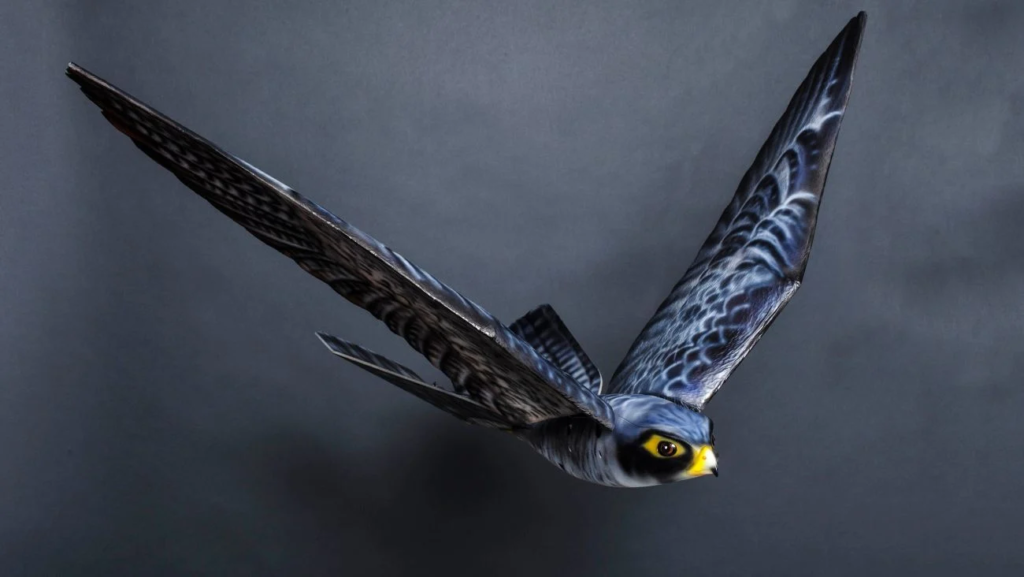Scientists from the New Mexico Institute of Technology have created drones using real bird body parts from deceased and taxidermied birds.
Advertisement
The two ornithopters – or aircraft with flapping wing mechanisms – have tremendous military as well as civilian applications, where they can spy on enemy movements and at the same time fly among real birds for wildlife monitoring.
The team led by Prof Mostafa Hassanalian built two such ‘dead bird bots’ – one fusing artificial body parts with an actual pheasant’s head and feathers and the other of a mechanical body combined with real pigeon wings.
Many aerospace projects have drawn inspiration from the aerodynamics of real birds, the most prominent being the B-2 Spirit stealth bomber. Many aviation observers have noted how the side profile of the jet and its nose look strikingly similar to that of a Hawk.
Dead-Bird Bots – Quite & Real
Flapping wings are more efficient and wind-tolerant than fixed wings, making them more agile, maneuverable, and even stop mid-flight to hover in the air. Presently, military drones are limited in their ability to stop and start in the air – a serious barrier to drones offering surveillance of a given area.
The current effort is similar to the robot dog by Boston Dynamics, Spot, and a copy created by China, which has been weaponized.
The underlying science behind the projects has been replicating actual living beings’ musculoskeletal and sensory systems for more realistic robot movement functions. It has often been perceived as a step towards more autonomous robots.
Advertisement
The researchers’ motivation was outlined in a paper presented at the American Institute of Aeronautics and Astronautics SciTech 2023 Forum, where they highlight the benefits of using genuine bird parts over artificial materials that have been engineered to behave like them.
Through evolution, birds have acquired lightweight bodies, hollower bones, and flexible feathers. This allows them to stay afloat and support their bodies solely through wind propulsion driven by their exertion, unlike aircraft with a powerful propulsive force in the form of engines.
Advertisement
Nature & Evolution Ahead Of Technology
Birds use their muscles to bend and contort the shapes of their wings, which aid tight maneuvers. Feathers also allow stealth, as the flapping sound of the wind can only be heard from a close distance.
However, the dead bird drones in the video don’t look nearly as stable in flight as the actual winged creatures. Nevertheless, with some technical refinement, the scientists hope to achieve the fluidity that would allow them to fly overhead and land without arousing suspicion.
The ornithopters can both sneak up on other aerial targets or watch people while remaining completely undetected. If not for military use, drones also have a significant zoological research purpose, where they can observe other bird species without alarming them. A drone with a spinning propeller and a lot of noise scares away birds and is easily detected by enemy eyes.
The drone also doesn’t seem to have any onboard camera that relays video feedback to the operator, making it a line-of-sight aircraft, i.e., the operator always has to keep eye on it.
This, however, isn’t the first drone to move on mimicked movements of real birds. As far back as 2013, the Avitron v2.0 Bionic Remote Controlled Bird had become quite popular and appeared to show very stable and controllable flight. That drone’s flapping wings were, however, the result of regular spinning motors that ran various intricate gears, which made two rods make a constant ‘up and down’ motion.
Advertisement

The taxidermied birds have a large lever exposed outside their body that moves their wings in what looks like a hydraulic or pneumatic system. This is, however, unclear as the video of the New Mexico Institute of Technology drones is very short and doesn’t possess that information.
US Military Eyed Animal Capabilities In Drones For Long
This is not the first time the military has looked at replicating animal bionic-based technology on their drones. In 2012, the US Army was reported to have been allotted $2 million to conduct research into drones that mimic avian flight to be able to navigate more hostile, rugged, and unpredictable environments.
AeroVironment’s nano hummingbird drone was one of the top inventions in 2011. It was developed under a project sanctioned by the Defense Advanced Research Projects Agency (DARPA).
In 2021, the Air Force Research Laboratory (AFRL) developed a “micro drone for open surveillance to perform insect-like maneuvers with two physical actuators while utilizing minimal computer processing power.”
Back in 2010, the US Navy was funding research into replicating the movement of fish and the echolocation of bats. The Pentagon has also been interested in the tiny hairs of insects to be able to sense changes in the wind and other environmental factors.
Advertisement